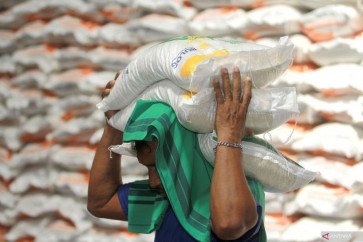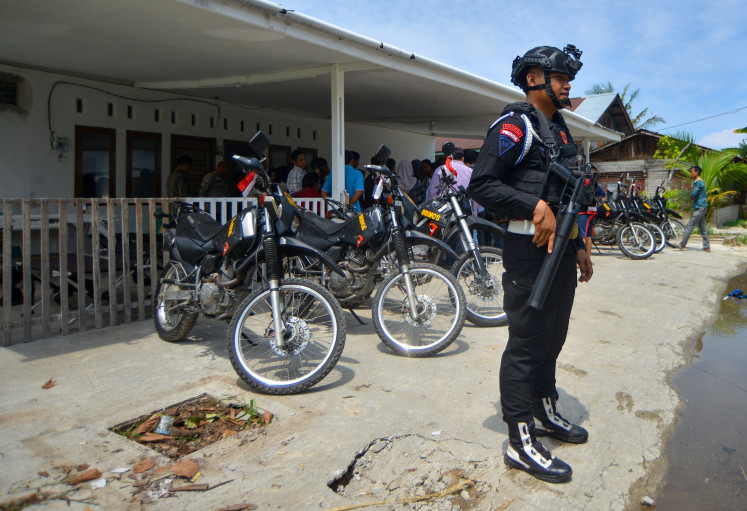Popular Reads
Top Results
Can't find what you're looking for?
View all search resultsPopular Reads
Top Results
Can't find what you're looking for?
View all search resultsAstra Honda Motor flexes muscle to grip more of ASEAN
Neighborhood shipments: Workers assemble motorcycles at the PT Astra Honda Motor (AHM) assembling plant in West Cikarang, Bekasi, in this file photo
Change text size
Gift Premium Articles
to Anyone
N
em>Neighborhood shipments: Workers assemble motorcycles at the PT Astra Honda Motor (AHM) assembling plant in West Cikarang, Bekasi, in this file photo. AHM will start exporting two-wheelers to neighboring ASEAN countries in June as part of its effort to expand into overseas markets. JP/Nurhayati
Indonesia's major motorcycle maker Astra Honda Motor (AHM) will commence exporting two-wheelers to neighboring ASEAN countries in June as part of its efforts to extend its grip on the overseas market.
By taking this step, the firm would try to tap into the enormous potential in the region supported by the competitive products it could offer, AHM vice president director Johannes Loman said Monday.
Loman singled out massive production as a competitive edge for AHM motorbikes.
'We've already been exporting but the figure is still very small. We believe that we can still expand our market,' Loman told reporters at the Industry Ministry's office.
Loman declined to elaborate on what type and how many motorbikes AHM intended to export in the initial phase.
Up to present, AHM, which is a joint venture of Indonesia's diversified Astra International group and Japan's Honda Motor Co., has shipped motorbikes to Timor Leste, last year totaling between 3,000 and 4,000 bikes.
AHM's shipments will be supported by its new motorcycle plant in Karawang, West Java, which is able to produce 1.1 million units each year. This fourth plant for AHM has been designed to serve not only the domestic market but also Southeast Asia. Commencing operations last December, the plant has boosted the firm's overall production capacity to 5.3 million motorcycles annually, making the Indonesian subsidiary Honda's biggest facility worldwide. AHM delivered 5.05 million two-wheelers domestically last year, up 7.54 percent from 2013, and maintained its position as market leader with a 63.66 percent share of nationwide sales.
Traditionally, exporting motorbikes is not easy as many countries, especially developing nations, have been able to produce their own. However, as production volumes have surged thanks to huge domestic demand, manufacturers have increasingly reached an economy of scale allowing more efficient production at a lower cost.
This seems to be the case in Indonesia, which this year expects its motorbike sales, a key indicator of consumption, to hit 8 million units, up 2 percent from the previous year. Last year, exports accounted for 41,746 units, more than double 2013's total. Motorbike makers grouped under the Indonesian Motorcycle Association (AISI) anticipate that exports of two-wheelers will climb by nearly 20 percent to 50,000 units this year.
Suzuki Indomobil Motor (SIM), the country's third largest seller of motorcycles, last week began exporting its automatic scooter, Suzuki Address, to 24 countries in Europe, Japan, Oceania and ASEAN. It targets overseas sales reaching 30,000 bikes this year, which will be gradually increased to 200,000 by 2019.
Industry Minister Saleh Husin, meanwhile, said that AHM would ship automatic scooters to the Philippines as its debut product delivery to ASEAN. The scooters could total around 50,000 units.
'This is just the beginning. It will surely expand to other countries as well,' he said.










